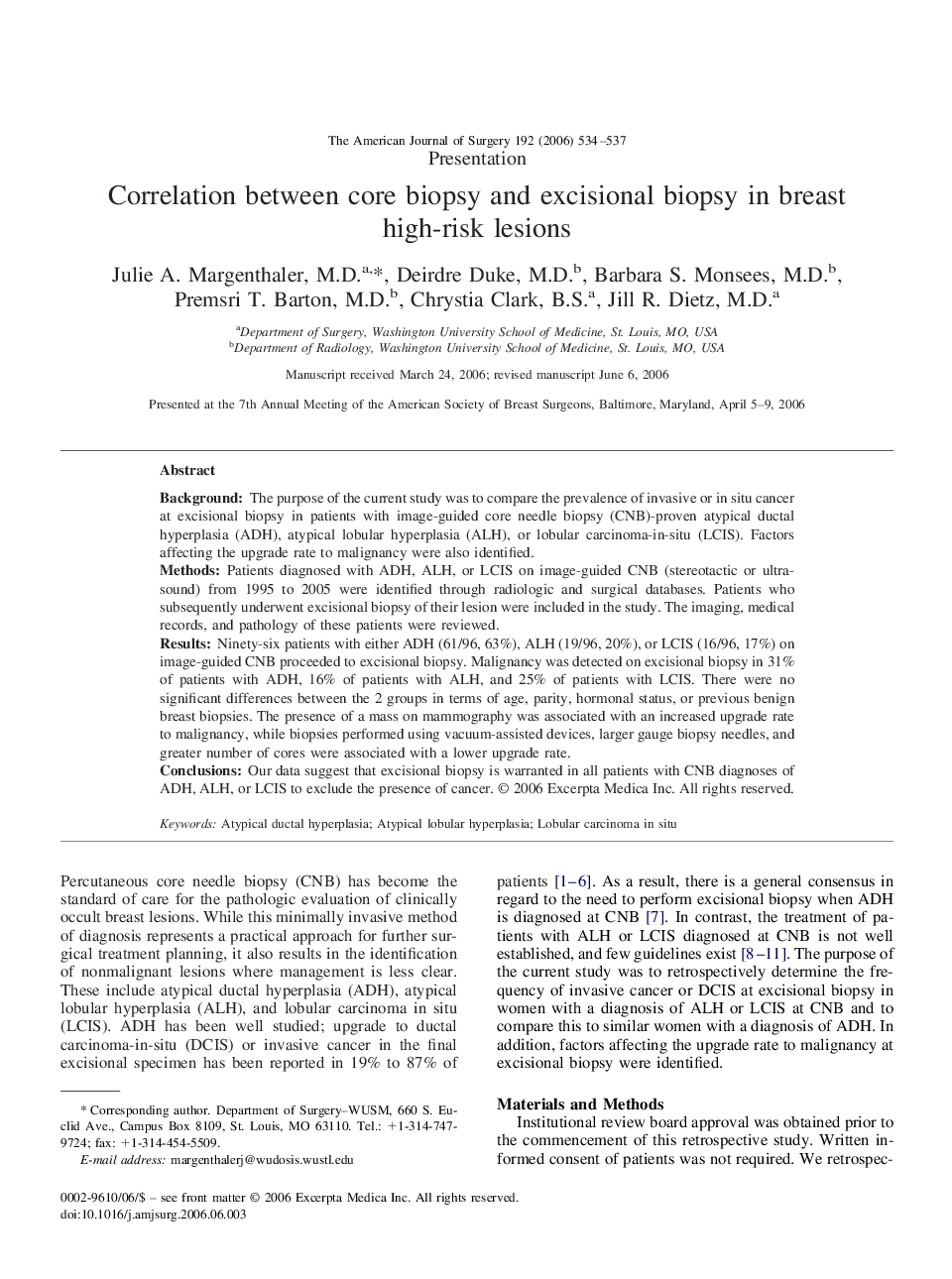| Article ID | Journal | Published Year | Pages | File Type |
|---|---|---|---|---|
| 4281877 | The American Journal of Surgery | 2006 | 4 Pages |
BackgroundThe purpose of the current study was to compare the prevalence of invasive or in situ cancer at excisional biopsy in patients with image-guided core needle biopsy (CNB)-proven atypical ductal hyperplasia (ADH), atypical lobular hyperplasia (ALH), or lobular carcinoma-in-situ (LCIS). Factors affecting the upgrade rate to malignancy were also identified.MethodsPatients diagnosed with ADH, ALH, or LCIS on image-guided CNB (stereotactic or ultrasound) from 1995 to 2005 were identified through radiologic and surgical databases. Patients who subsequently underwent excisional biopsy of their lesion were included in the study. The imaging, medical records, and pathology of these patients were reviewed.ResultsNinety-six patients with either ADH (61/96, 63%), ALH (19/96, 20%), or LCIS (16/96, 17%) on image-guided CNB proceeded to excisional biopsy. Malignancy was detected on excisional biopsy in 31% of patients with ADH, 16% of patients with ALH, and 25% of patients with LCIS. There were no significant differences between the 2 groups in terms of age, parity, hormonal status, or previous benign breast biopsies. The presence of a mass on mammography was associated with an increased upgrade rate to malignancy, while biopsies performed using vacuum-assisted devices, larger gauge biopsy needles, and greater number of cores were associated with a lower upgrade rate.ConclusionsOur data suggest that excisional biopsy is warranted in all patients with CNB diagnoses of ADH, ALH, or LCIS to exclude the presence of cancer.
